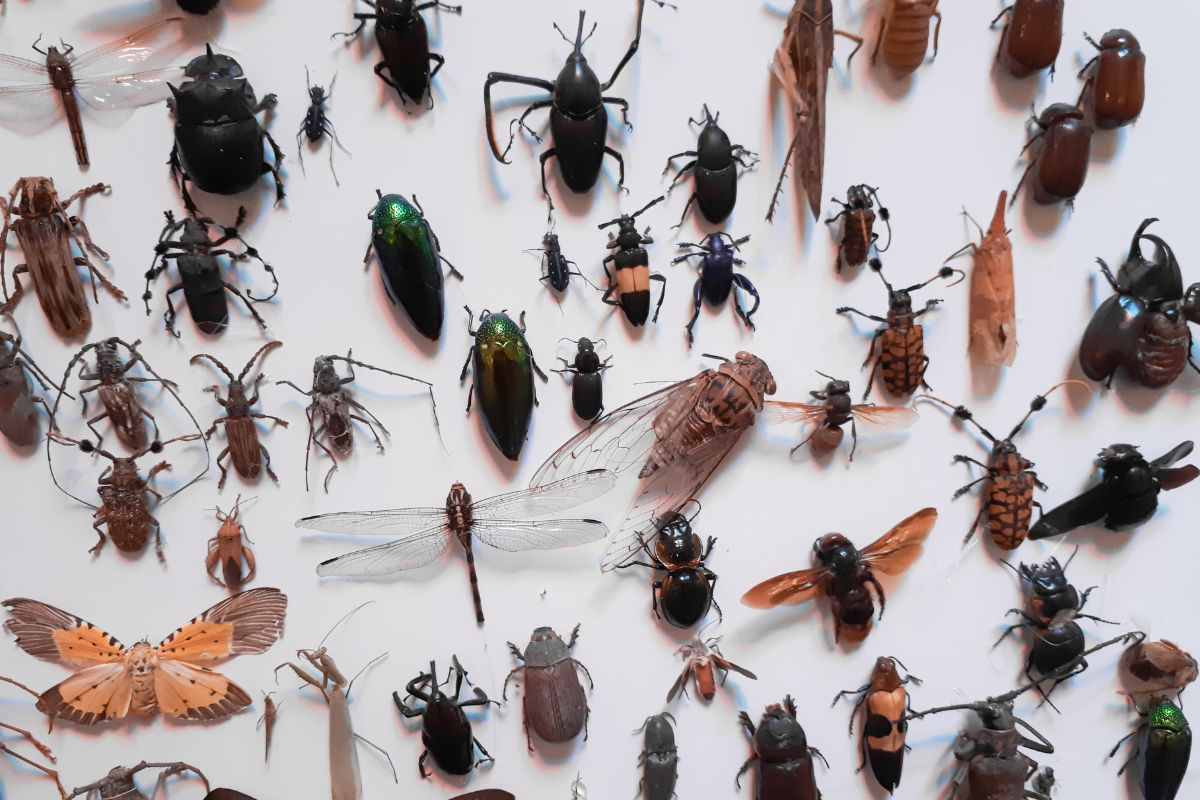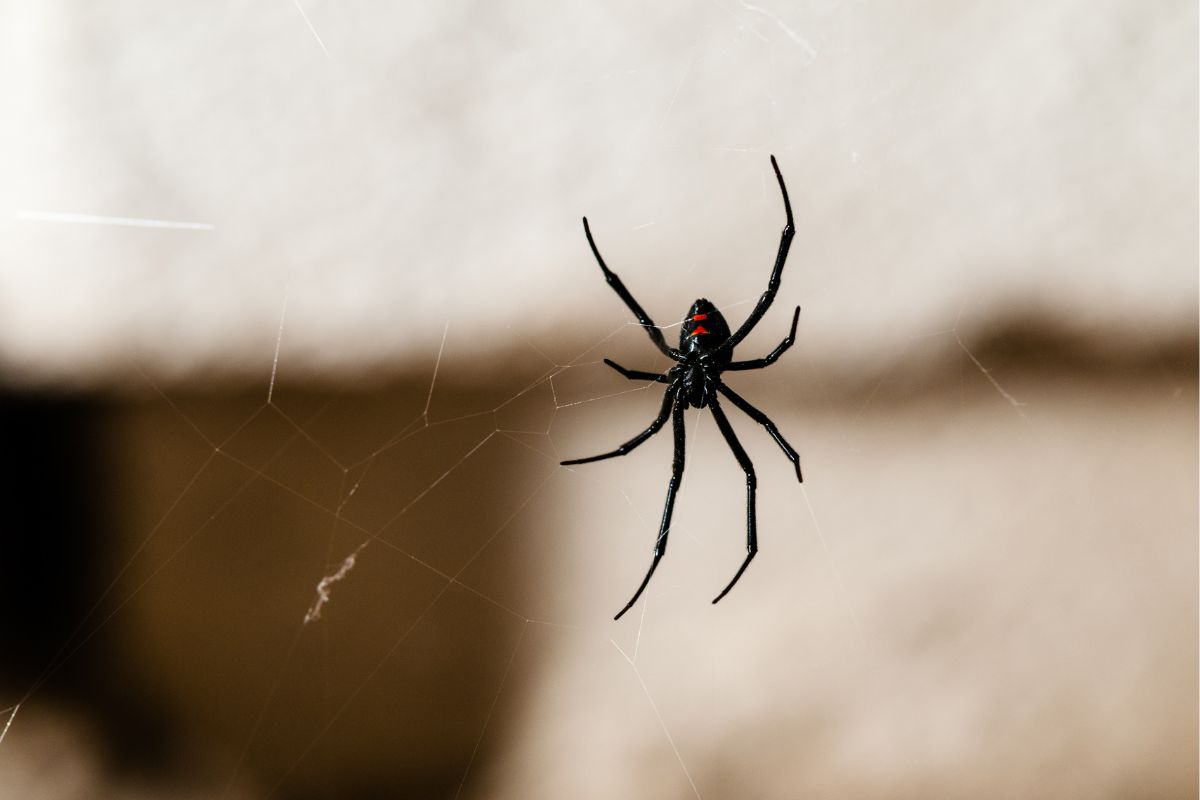Invertebrate Zoology is the Study of…
Invertebrate zoology is the study of animals without backbones in general. Invertebrates include various creatures such as echinoderms, tunicates, and sponges.
In other cases, different worms, phyla, arthropods, and mollusks also fall under the invertebrate category. Invertebrates play a considerable role in animal species since they represent a large percentage of up to 97%.
What is an Invertebrate?
Invertebrates are animals without backbones in general. Most invertebrates do not have bones in them. The total number of invertebrates ranges above 1.25 million.
The three main groups that classify invertebrates include:
- Insects
- Crustaceans
- Arachnids
Insects
Insects make up the most significant number of invertebrates in invertebrate zoology. Insects have two antennae, three body parts, and six legs. They also fall under the insect family.
Examples of insects with wings include butterflies, beetles, stick insects, and bees. The majority of insects are relatively small in size. In most cases, most insects range around 6 mm (0.2 inches) in length.
When it comes to width, the measurement may vary a little. Some insects are more expansive than others due to some additional natural features. Some other insects are microscopic, and you may not spot them directly with your naked eyes.
Other tropical insects like the African Goliath beetles, Hercules beetles, the Hercules moth, and several Australian stick insects can be enormous. These tropical insects may grow to 10.6 inches (27 centimeters).
How Do Insects Feed?
Lying among the largest group of living organisms when it comes to invertebrate zoology, insects feed using their jaws. These jaws play the most crucial role since they aid in biting and chewing food. Such insects include dragonflies, houseflies, and butterflies.
Houseflies are insects with an additional feature when it comes to feeding. These insects usually soften their food by using their saliva before taking it in liquid form.
When it comes to the eating behavior of insects, there are usually two main categories to look at. There are insects like ants which are chewers. Such insects chew on various foods, such as the leaves of plants.
In the field of invertebrate zoology, some insects feed by sucking through their food. An excellent example of a sucker is the mosquito. Mosquitoes get to rule when it comes to this category since they use their proboscis to suck out blood from other animals. Aphids are typical suckers because they can extract food from plants through sucking.
In invertebrate zoology, Insects that fall under these two feeding categories can also be into two groups. The division comes from their life cycle since they reflect their specific feeding methods. Insects such as butterflies may transform by completing a metamorphosis using several stages.
The transformation occurs in butterflies once they change from egg to larvae just before getting into pupae and coming out later as a complete butterfly. The whole process of transformation is somehow gradual, and during this time, the feeding method also goes through several changes.
During metamorphosis, the larvae feed but not on the other side. They only feed together once the butterfly comes out. Insects that do not go through a complete metamorphosis are also different.
In the field of invertebrate zoology, insects that do not go through a complete metamorphosis usually look like adults of small size. Small insects that resemble adults feed the same way as grown-up adults. The diet of the tiny insects is also the same as that of the fully grown adults.
Most insects may be chewers or suckers, but that factor may change as time passes. Every change in the metamorphosis cycle also changes the feeding methods, patterns, and habits. Below are examples of how specific insects feed:
Cabbage Aphid
The cabbage aphid is an excellent example of an insect that feeds by sucking through its food. These insects usually press the style inside up to the plant’s phloem. The phloem usually acts as the house to the plant’s energy. Cabbage aphids have the advantage of sucking out this energy since they usually aim directly for it.
In the phloem, there are also large amounts of nutrients and sugar. Cabbage aphids also take out these nutrients directly since they do not target any other part of the plant they feed on.
According to invertebrate zoology, once cabbage aphids suck out sugar from the phloem of a plant, they pass it through their body and release it in the form of honeydew. You may easily find the honeydew from cabbage aphids during summer on the leaves of trees.
Cabbage aphids are usually pests to farmers because they live inside the cabbage or other related plants. A heavy infestation of cabbage aphids may lead to poor plants since they always drain a particular plant’s nutrients and energy. Once energy and nutrients are available inside the plant, these aphids move to another healthy plant.
Froghopper
This insect gives out small amounts of foam on the plant. In some cases, this form is the cuckoo spit. You may spot the cuckoo spit on the plants around May or June.
The young ones of the Froghoppers, also known as the nymph, usually take out water from the plant. The water passes through their digestive system and leaves their body in foam. The lymph uses this form to protect itself from predators by leaving it behind on its paths.
In the plant solutions, there are usually few nitrogenous nutrients. The nymph uses the nutrients to grow. The foam dries up once the insects leave the plant.
Wasps
Wasps mainly feed on nectar as their primary food. They also take out the flower’s juice and leave the honeydew behind. Larvae usually develop in the nest, and adults give out food to the larvae. A colony of wasps usually takes over several cells.
Crustaceans
This classification covers animals with 10 or more than 14 legs. Invertebrate zoology states that crustaceans also have two body parts and four antennae in most cases. An excellent example of such creatures includes lobsters, crabs, and shrimp since most organisms live underwater.
Other crustaceans usually live away from the water. You may easily spot such crustaceans outside or around places with dirt. An excellent example of crustaceans living on land includes a roly-poly, also known as a pillbug.
To this date, there are more than 50,000 documented crustaceans. Other animals under the crustacean category live in terrestrial surroundings, but most remain aquatic.
According to invertebrate zoology, crustaceans fall under the Phylum Arthropoda and Subphylum Crustacea. The metamere is an essential distinguishing feature of crustaceans.
There are several types of crustaceans, classifying them further into smaller groups. The main types of crustaceans include
- Malacostraca
- Copepods
- Thecostraca
Malacostraca
All crustaceans with segmented bodies fall under the Malacostraca class. This animal class involves living things in marine, terrestrial, and freshwater environments. Bodies of living things that fall under this category comprise the head, thorax, abdomen, and a telson in some cases.
According to invertebrate zoology, most Malacostraca living things have almost twenty body segments. Five of the total segments are around the head, while six or seven are in the abdomen. Eight of the remaining segments are in the thorax.
All segments in a malacostracan usually have appendages except the last part on the abdomen and the first segment in the head. The arrangement of these segments comes when all seven pieces are present.
Compound eyes are also a common characteristic of the living things in this subdivision. The compound eyes of these creatures are either stalked or sessile.
The antennae of all crustaceans under the Malacostraca sub-division are usually on a little brace. The mandibles may either be average in some cases. In females, the genital aperture is at the thorax’s 8th segment. In females, the genital aperture location is slightly different since it is on the 6th segment of the thorax.
Malacostraca is the largest group of crustaceans since it records more than 25,000 species. Shrimps, crabs, lobsters, krill, woodlice, and prawns are good examples of species under this subcategory of crustaceans.
Copepods
Copepods are groups of crustaceans that have a more elongated body. The head, thorax, and abdomen are the main sections of the creatures under this subcategory. The first two sections fuse with the head creating a cephalothorax.
Segments in the thorax also play an essential role since they pair the appendages with two main sections. The pieces in the abdomen are variable since they do not bear any appendages. The only segment that has appendages in this section is the caudal rami.
Invertebrate zoology proves that all living things under this group usually have medium eyes, which are also Nauplius. The package also includes a mandible together with perfect antennae. There is also a genital aperture segment right before the abdomen. The egg remains attached to the oviduct immediately after leaving the ovisac.
After some time, the eggs hatch into larvae under conditions that favor the process. They all play an essential role in ecology.
After feeding, these living organisms store a layer of thick fat in their body. This thick layer of fat plays a vital role in providing them with food in the future, even when there is scarcity. There are more than 11,500 species of living things under this category. Examples of animals under this classification include Cyclops, Calanus, Boeckellan, and Lernaea.
Thecostraca
With over 2,200 species falling under the Thecostraca group of classification, this group also proves to hold many living things. The creatures under this group are primarily marine, and most of them are fond of living in tidal and shallow waters.
Most living things under this classification group are planktonic and either become non-motile or parasitic immediately after they mature. These organisms usually have a carapace together with front lateral horns. The most common creature under this classification is the barnacle.
Arachnids
Invertebrate zoology states that all animals with eight legs at maximum are arachnids. Most animals falling under this category have two body parts and an antenna. The most common arachnids you may spot around include scorpions and spiders.
Many people fear arachnids since most of them may be poisonous in case of a bite. On the other hand, animals falling under the arachnid category prove to be very beneficial to people. The benefit comes since these animals love to feed on pests that are harmful to humans.
Arachnids play a good role in keeping other insects away from humans. Many creatures under the arachnid classification are harmless to humans because they never attack without any definite threat.
Characteristics of Arachnids
All arachnids belong to the Phylum Arthropoda. Falling under the Arthropoda Phylum means that creatures under this group share the same characteristics. Below are the main features of living things under the Arachnid umbrella:
- All arachnids have jointed legs. In basic terms, the word arachnid primarily means joint legs.
- All arachnids usually have appendages in at least one segment of their bodies.
- The creatures under the group usually molt or shed their exoskeleton as they age.
- All arachnids have segmented bodies.
- Arachnids have a form of outer covering that encloses their bodies. The outer covering is the exoskeleton, which protects the body’s inner parts.
- All living things that fall under the arachnid group have a free-flowing circulatory system. The blood flowing in their bodies is not contained in vessels but flows directly.
The Arachnid Anatomy
All arachnids have two body parts. The cephalothorax is the front section, while the abdomen is the rare section. These body parts are quickly visible and easy to identify. Other creatures that fall under the arachnid category are not so easy to determine. Read our article and find out 6 Veterinary Anatomy Books You Need on Your Bookshelf.
All arachnids usually have jointed appendages in four pairs, allowing them to move faster. The appendages in these arachnids are together, allowing them to move smoothly. A significant degree of skill also comes from the joint appendages.
When it comes to grasping and cutting food and objects, arachnids have a unique pair of appendages that facilitates this function, making it easy and smooth. Behind the Chelicerae, which are for cutting, is another pair of appendages known as the Pedipalps. The pedipalps are the mouthparts of the arachnids.
According to an in-depth study in invertebrate zoology, in other organisms, it may be difficult to spot the pedipalps. The mouth sections of all arachnids are also known as mandibles.
In most cases, many arachnids are predators. These animals do not feed on their prey directly. Arachnids usually liquefy the prey first and then drink their juice. Other arachnids typically attach themselves to their hosts and feed on them by sucking their blood. The tick is an excellent example of an arachnid that connects itself to hosts to feed.
The pedipalps help ticks and other arachnids in this category to feed well. The Spinnerets have glands that produce silk. The spinnerets glands are on the lower section of the abdomen.
These glands usually give out secretions that turn into threads after a short period. The secretion plays a vital role in catching prey or weaving. The secretion also facilitates the production of egg sacs. Almost all arachnids give out silk from the spinners, but not all of them usually produce spin webs from the spinnerets.
Feeding of Arachnids
Most arachnids loves to feed on arachnids of smaller sizes. Some other arachnids, such as ticks and mites, do not fall under the common arachnids that love feeding on smaller arthropods. Mites and ticks get their nutrients from fluids. The fluids containing mites and ticks’ nutrients come from plant materials.
Most decaying organic matter also produces juices that most arachnids use as food. Parasitic forms of arachnids usually feed by sucking out juices and blood due to their special modified mouth sections. Other active arachnids, such as the sun spiders, usually use visual and tactile responses to recognize their prey. Other arachnids love to look for their prey in the dark.
An excellent example of an arachnid that looks for food in the dark is the American Whip Scorpion. The arachnids that look for food in the dark usually use the pedipalps for hunting down their prey.
After acquiring the prey, arachnids usually spray out chemicals to melt down the whole prey before consumption. All arachnids squirt out these chemicals since they can only feed on liquid foods.
The Arachnid Association
Most arachnids are usually solitary in nature. However, in some cases, some arachnids love to live close to one another, mostly in groups. Spiders are an excellent example of arachnids that love staying in groups. In most cases, you may find spiders together in a communal web. This spider’s web can house males, females, and spiderlings.
Almost all the spiders stay inside the web, while the exterior provides room for catching prey. The central section of the web acts as the main living quarters. All the web inhabitants always equally share the prey they get on the web. You may easily spot these spiders together on the web during cold seasons. Being together during cold periods aids the spiders in keeping warm.
The History of Invertebrate Zoology
From the beginning of the 16th century, there was a steady growth in the field of invertebrate zoology. The development came to begin thanks to several publications about different experimental practices. The testing practices under improvement were all related to zoological studies.
The invention of study equipment such as the microscope also paved the way for immense growth in the invertebrate zoology field. The microscope made it easy to observe small animals that fell under the classification of invertebrates.
In the early days around the 18th and 19th centuries, the study of invertebrates only focused mainly on economic pursuits. Agricultural pests were the main things under investigation during this time. The entomology field began to change rapidly during this period leading to the discovery of various new creatures.
By the 20th century, the classification and study of invertebrates took another turn. The investigation moved to the evolution, relationship, and morphological description. By 1966 the Phylogenetic Systematics book came out, making the study even more manageable.
The writer defined the aims of classifying all living things in the book. He focused on evolution and relationships over the similarity of the natural features.
















Our Favorite Invertebrate Zoology Books
Invertebrate Zoology a Laboratory Manual
About
This book cuts the costs of owning several science textbooks since it covers a large section of various zoological lab topics. The book proves to be very helpful primarily to students looking for a way of diversifying their science knowledge in invertebrate zoology using a single book.
There is a second edition of this book, which has been available since 2016. The first edition is still in place and contains some actual zoological science content. The second edition is a little more advanced since it includes 86 more pages of additional material. Most of the extra material is on the ecology and biology of invertebrates.
The new edition also features 46 more links to additional video material emphasizing the biology of invertebrates. The latest edition of this book is available as a kindle book and in hard copy.
Book Details
ASIN: B00H89JA3E
Language: English
Text to speech: Enabled
Publication date: December 8, 2013
File size: 3,231KB
Best seller rank: #3,035,039
Print length: 130 pages
Screen reader: Supported
X-ray: Not enabled
Lending: Enabled
Enhanced typesetting: Enabled
Wordwise: Enabled
Invertebrate Zoology: A Functional Evolutionary Approach
About
With the high accuracy and a super solid research base, this book proves to attract many users. Learners or teachers may grasp in-depth knowledge emphasizing physiology and adaptive morphology while simultaneously going through anatomical ground plans.
The book also covers the basic developmental patterns in the field of invertebrate zoology. In the book, learners may learn about the excellent balance of Ruppert’s background as a functional morphology.
Strong illustrations and complete citations come in to make the book more valuable. With all the advantages inside, this book works well as teaching material or a reference book.
Book Details
Language: English
Publisher: Cengage Learning; 7th edition (August 7, 2003)
ISBN-10: 0030259827
ISBN-13: 978-0030259821
Print length: 1,008 pages
Best seller rank: #1,352,389
Dimensions: 8.5 by 1.5 by 10.5 inches (21.5 by 3.8 by 26.6 centimeters)
Invertebrate Zoology Lab Manual (6th Edition)
About
This book is quite broad when it comes to comprehensive invertebrate zoology books. The book uses the popular phylum by phylum approach and preserved and live specimens. This wide extension of more than 24 laboratory exercises proves to be very beneficial to learners.
Students or teachers with this book can ask and answer questions after conducting extensive research far and wide inside the book. In the book, readers may grasp crucial biological information in invertebrate zoology.
Some main facts that readers may learn are Phylogenetic descriptions, etymon for phylum names, simple geological time scales, simple pronunciation guide systems for scientific names, and many illustrations.
The book also includes learning materials for the protozoans, Phylum Porifera, Cnidaria, Phylum Ctenophora, Platyhelminthes, Phylum Nemertea, Phylum Rotifera, Phylum Arthropoda, Phylum Brachiopoda, Phylum Kamptozoa, Phylum Bryozoa, Phylum Chaetognatha, Phylum Nematoda, Phylum Mollusca, Phylum Annelida, and many others.
Book Details
Language: English
Publisher: Pearson; 6th edition (April 15, 2002)
Language: English
ISBN-10: 0130429376
ISBN-13: 978-0130429376
Print length: 368 pages
Item weight: 1.67 pounds
Bestseller ranks: #440, 829
Dimensions: 8.55 by 1.1 by 11 inches (21.5 by 2.7 by 27.9 Centimeters)
A Basic Glossary of Invertebrate Zoology
About
Learners may get in-depth knowledge about more than 900 biological terms in the field of invertebrate zoology. This book carefully and thoughtfully defines every natural word to the furthest extent. Each name in this book gets its proper taxonomic name context based on the current scientific studies.
At the beginning of this book, there is an in-depth guide showing all the Latin and Greek root numbers. The numbers also include a list of invertebrates that go directly with them. There are also punctuation guides for all the words which are not so familiar. At the end section of the book, there is a summary of near-synonyms and all the other synonyms.
This book is also perfect for further readings at the end section. With only one edition on the market so far, the book is a must-have due to the above factors that indicate the contents inside.
Book Details
Publisher: Counselor Books, L.L.C (April 1, 2016)
ASIN: B01DQXNPH2
File size: 3,515 KB
Language: English
Publication date: April 1, 2016
Screen reader: Supported
Text to speech: Enabled
X-ray: Not enabled
Enhanced typesetting: Enabled
Wordwise: Not enabled
Page numbers source ISBN: 1530670020
Print length: 192 pages
Lending: Enabled
Best seller rank: #2,283,973
Summary
Invertebrate zoology proves to be a vast field. Every biologist, student, and instructor should know the best books to guide them. The best books on invertebrate zoology should assist a lot in grasping primary and secondary knowledge.









